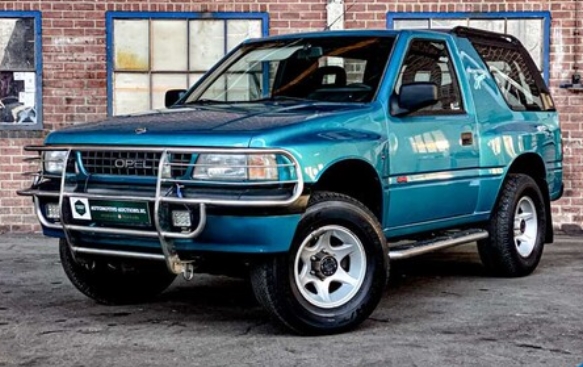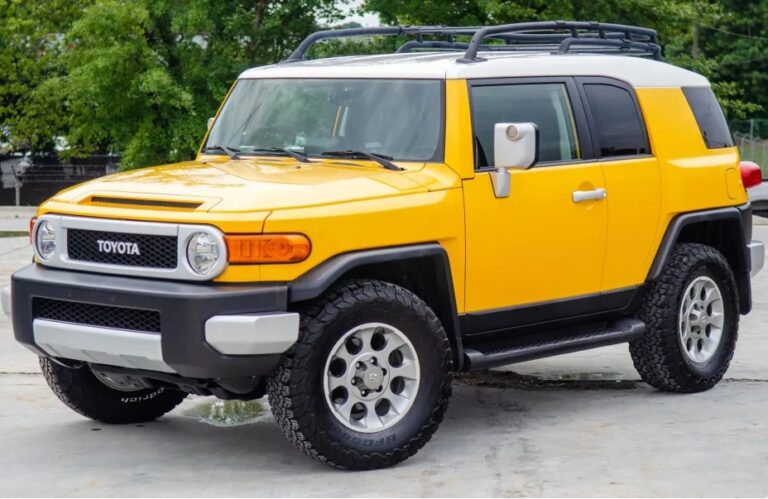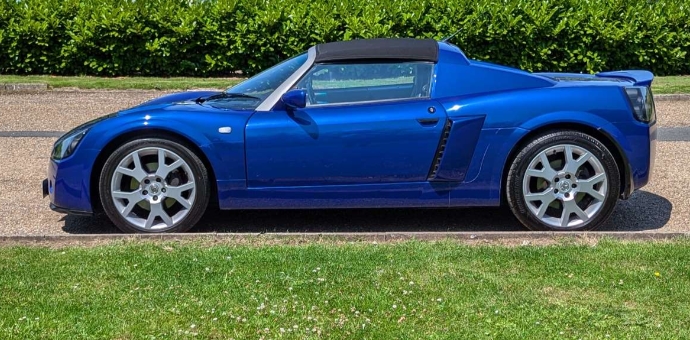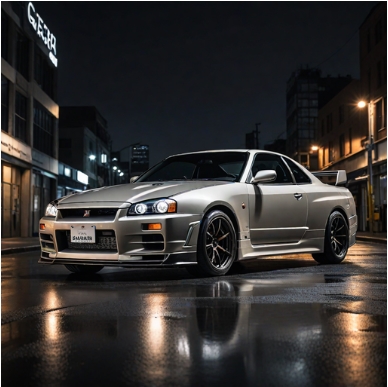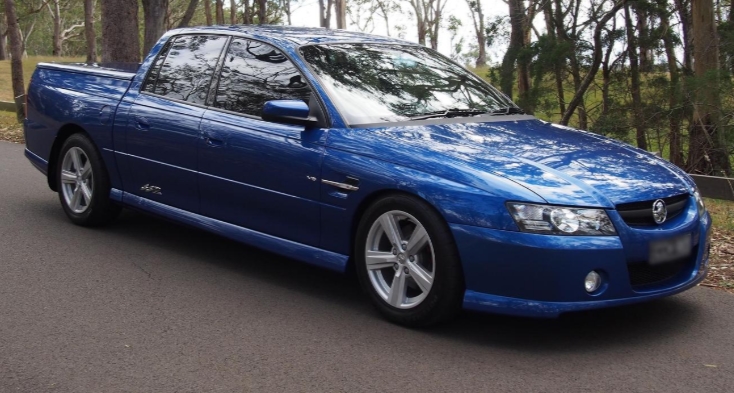The Tale of Two Frontiers: The Evolution of the Opel Frontera
In the annals of automotive history, few vehicles so perfectly capture a market in transition as the Opel Frontera. It was not a trailblazer of technology, nor a paragon of performance, but its arrival in the early 1990s heralded a seismic shift in the European automotive landscape. The Frontera was Opel’s answer to a growing public desire for vehicles that blended the rugged, go-anywhere image of a traditional 4×4 with the everyday usability of a family car. It became a symbol of the burgeoning “lifestyle SUV” segment, a flawed but beloved workhorse that bridged the gap between agricultural off-roaders and the polished crossovers of today. This is the story of its evolution, from a rebadged Japanese pioneer to a refined second act, and its surprising 21st-century rebirth.
The First Generation: Opel Frontera A (1991–1998)
The Dawn of the Lifestyle SUV
To understand the Frontera A, one must understand the context of its birth. By the late 1980s, the market for off-road vehicles was dominated by two extremes: utilitarian machines like the Land Rover Defender and Suzuki SJ, and premium, expensive cruisers like the Range Rover and Toyota Land Cruiser. General Motors, observing the success of vehicles like the Mitsubishi Pajero/Shogun, identified a lucrative gap in the middle. European families and active individuals were increasingly drawn to the high driving position, perceived safety, and adventurous aesthetic of 4x4s, but were unwilling to sacrifice on-road comfort and affordability.
Rather than engineer a new vehicle from the ground up—a costly and time-consuming process—GM leveraged its global partnerships. The solution came from Isuzu, a Japanese manufacturer renowned for its robust commercial vehicles and 4x4s. The Opel Frontera was, in essence, a European-market version of Isuzu’s MU (Mysterious Utility) and Rodeo line-up. Production was localized at the IBC Vehicles plant in Luton, England, a joint venture between GM and Isuzu, which also produced the vehicle as the Vauxhall Frontera for the UK market.
Launched in 1991, the Frontera A was offered in two distinct body styles, a strategy that brilliantly catered to different demographics:
Frontera Sport (Short-Wheelbase – SWB): Based on the three-door Isuzu MU/Amigo, the Sport was aimed squarely at a younger, more adventurous buyer. Its defining feature was its “sun-roof” configuration, featuring a removable hardtop over the rear passenger and cargo area, with some versions also offering a full soft-top. This open-air capability gave it a fun, beach-buggy appeal, competing directly with vehicles like the Suzuki Vitara.
Frontera Estate (Long-Wheelbase – LWB): Based on the five-door Isuzu Rodeo/Wizard, this was the practical, family-oriented model. With four doors, a full steel roof, and a cavernous boot, it offered the space and utility of a traditional estate car but with the added benefit of four-wheel drive and rugged styling.
Models, Engines, and Trim Levels (1991-1995)
The initial engine line-up was sourced directly from the existing GM/Opel parts bin, a move that ensured familiarity for mechanics and kept costs down.
2.0i Petrol (C20NE): A simple but durable 8-valve, four-cylinder engine producing 115 PS. This was the same unit found in the popular Opel Vectra and Calibra, known for its reliability rather than its performance, especially when tasked with hauling the Frontera’s considerable weight.
2.4i Petrol (C24NE): Offered primarily in the LWB model, this larger four-cylinder provided more torque (195 Nm) and a slightly higher output of 125 PS, making it better suited for towing and heavy loads.
2.3 TD (23DTR): This 2.3-litre turbo-diesel, sourced from Isuzu, produced 100 PS. While not particularly quick, its strong low-end torque made it a capable off-roader and a popular choice for its superior fuel economy.
Trim levels were straightforward, typically following Opel’s established hierarchy:
GL: The base specification, which was relatively spartan but included the core features like power steering and the selectable 4WD system with a low-range transfer case.
GLS: A step up, the GLS added creature comforts such as electric windows and mirrors, central locking, and often alloy wheels and a more premium interior cloth trim.
Sport: This designation was often used for the SWB model itself but also denoted a specific trim level that included unique decals, alloy wheels, and sometimes features like a tilt-and-slide sunroof in the front section of the roof.
The 1995 Mid-Cycle Facelift
By 1995, the competition had intensified. To keep the Frontera fresh, Opel introduced a significant update. The most noticeable change was a revised rear suspension on the LWB Estate model, which replaced the somewhat agricultural leaf springs with a more sophisticated coil-spring setup, vastly improving its on-road ride comfort and handling.
Cosmetically, the grille and bumpers were subtly redesigned, and the interior received a new, more ergonomic dashboard. More importantly, the engine line-up was modernized:
2.2i 16V Petrol (X22XE): A new 16-valve engine replaced the old 2.4i, offering a healthier 136 PS and better refinement.
2.8 TDI Diesel (4JB1-T): The old 2.3 TD was replaced by a legendary 2.8-litre direct-injection turbo-diesel from Isuzu. With 113 PS and a robust 247 Nm of torque, this engine was lauded for its pulling power and durability, becoming the most sought-after powertrain in the Frontera A range.
The Frontera A was a resounding sales success. It democratized the SUV in Europe, proving that a 4×4 could be an aspirational yet attainable family vehicle. However, it was not without its faults. Early models, in particular, suffered from build quality issues and were notoriously susceptible to rust. Its body-on-frame construction, while strong, meant its on-road manners could never match those of a conventional car.
The Second Generation: Opel Frontera B (1998–2004)
A Push for Refinement and Modernity
By the late 1990s, the automotive world had changed. The first-generation Toyota RAV4 and Land Rover Freelander had introduced monocoque (unibody) construction to the segment, offering car-like handling and refinement that made the body-on-frame Frontera A feel dated. In response, Opel launched a heavily revised second generation in 1998, the Frontera B.
While still based on the updated Isuzu platform, the Frontera B was a far more polished and cohesive product. The exterior styling was significantly softened, with rounded edges, integrated bumpers, and flush headlamps replacing the blocky, utilitarian look of its predecessor. The track was wider, giving it a more planted stance, and the overall design felt more mature and upmarket.
The improvements were more than skin-deep. The chassis was stiffened, the suspension was retuned for a better balance between on-road comfort and off-road capability, and cabin insulation was dramatically improved to reduce noise, vibration, and harshness. A key technological upgrade was the introduction of an electronic “Shift-on-the-Fly” system, allowing the driver to engage four-wheel drive at speeds up to 100 km/h (62 mph) with the press of a button.
Models, Engines, and Trim Levels (1998-2004)
The two-model strategy continued with the Frontera Sport (SWB) and Frontera (LWB), though the “Estate” name was often dropped in favor of simply “Frontera” or “Frontera 5-Door.” The engine range was completely overhauled to meet modern performance and emissions standards.
2.2i 16V Petrol (X22SE): An evolution of the engine from the facelifted Frontera A, now producing 136 PS.
3.2i V6 Petrol (6VD1): The flagship engine, another Isuzu-sourced unit. This 24-valve V6 produced a smooth 205 PS, transforming the Frontera into a potent motorway cruiser and giving it the performance to compete with rivals like the Jeep Cherokee. It was typically paired with an automatic transmission and the highest trim levels.
2.2 DTI 16V Diesel (X22DTH / Y22DTH): Replacing the Isuzu diesels was Opel’s own direct-injection “Ecotec” diesel engine. Initially producing 115 PS, it was later upgraded to 120 PS. This engine offered better refinement and fuel efficiency than its predecessors, making it the volume seller of the Frontera B range.
The trim level structure became more sophisticated, often featuring a wider array of choice and special editions over its lifecycle.
Base: A no-frills entry point, often available only with the 2.2i engine.
Limited: The mainstream trim, which included air conditioning, alloy wheels, and electrics all around. It represented the sweet spot in the range.
RS / Sport: Often equipped with the V6 engine, this top-tier trim added features like larger alloys, leather upholstery, cruise control, and often a two-tone paint finish.
Special Editions: Throughout its life, Opel released numerous special editions like the “Olympus” (tied to a sponsorship) and “Edition 2000,” which bundled popular options at an attractive price point.
.

.
The End of the Frontier
Despite the significant improvements, the Frontera B faced an uphill battle. The market was rapidly moving away from traditional body-on-frame SUVs towards more car-like crossovers. By the early 2000s, the Frontera’s rugged underpinnings were seen less as a benefit and more as a compromise in on-road dynamics and efficiency. Sales began to decline, and in 2004, after 13 years and over 320,000 units sold, production of the Opel Frontera ceased. It was indirectly replaced by the Opel Antara in 2006, a unibody crossover based on a GM Daewoo platform, signaling the end of an era for Opel’s rugged off-roaders.
The Rebirth: The Frontera of 2024
For two decades, the Frontera name lay dormant, a fond memory for those who appreciated its honest, unpretentious charm. Then, in 2024, Opel announced its return. However, the new Frontera is a product of a completely different automotive world.
The 2024 Opel Frontera is not a body-on-frame 4×4. It is a modern, stylish compact crossover built on a Stellantis group platform. Offered with mild-hybrid petrol and, crucially, fully electric powertrains, its focus is on efficiency, digital technology, and urban practicality.
This revival perfectly encapsulates the evolution of the SUV itself. The original Frontera was born from a desire to bring off-road aesthetics to the masses. The new Frontera is born from the need to bring accessible electric mobility to the family market. The nameplate that once explored the frontier of lifestyle SUVs is now exploring the frontier of mainstream electrification. The spirit of adventure remains, but the terrain has fundamentally changed. The tale of the Opel Frontera is a journey not just of one model, but of the entire segment it helped to define.
